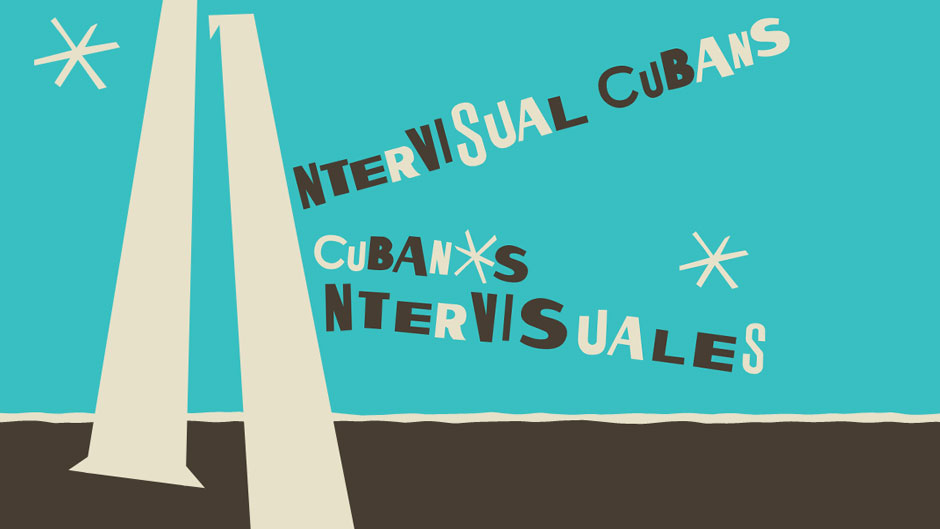The Lowe Art Museum’s latest exhibit is transporting viewers into the history of Cuban visual art with its “11 Intervisual Cubans.” Curated by students who were enrolled in a course during the Spring 2020 semester called ArtLab @The Lowe, the display provides students with the unique opportunity to organize an exhibition annually based on a theme related to the expertise of that year’s instructor.
This year, Lilian Manzor, associate professor in the College of Arts and Sciences and founding director of the Cuban Theater Digital Archive, led the course.
“The students had the opportunity to select materials for this exhibit from the Lowe Art Museum’s, the Cuban Heritage Collection’s, and Havana’s Center for the Study of Scenic Design’s materials on modern and contemporary Cuban art and performing arts,” Manzor explained. “Intervisuality, that is, the process of interpreting images based on other related or contiguous images, was the concept used to guide their choices.”
Yulia Golubyatnikova, an art history major, was one of 9 students who participated in this unique course. During the virtual opening held on Aug. 27, Golubyatnikova said she learned a great deal about what it takes to put together a project of this type.
“A lot of time and effort goes into the preparation and research. Each of us had to choose and learn about one artist and present our findings to the class. It was quite interesting to see how different artists responded to their social and political environment,” she said.
According to Manzor, the study of Cuban culture has been fragmented since the revolution in 1959. Many visual and theater artists who left Cuba were erased from Cuban history on the island. Exile communities began to create their own history, severing themselves from anything produced inside Cuba.
“These multiple fractures present unique challenges because to truly understand Cuba, we should approach it as Greater Cuba, a Cuba that can encompass those who live on the island and its multiple diasporas. The ‘11 Intervisual Cubans’ exhibit addresses many of those gaps in art and theater histories,” explained Manzor.
Ileana Tolibia, a studio art major, said she was unaware of the depth and variety of resources available on this subject at the Cuban Heritage Collection.
“The Cuban Heritage Collection contains rare visual, audio, and textual sources that are crucial for understanding Cuban history, literature, and the arts,” Tolibia pointed out. “The CHC, which is consulted by artists and scholars from all around the world, taught me how to navigate the information and conduct my research properly.”
Amanda Moreno, archivist for the Cuban Heritage Collection, said it was a pleasure working with these students under the direction of Manzor and co-instructor Dainerys Machado Vento.
“We hosted the students where they were able to work hands on with artistic items from our theater collections and learn about the process of curating an exhibition using archival materials,” she said.
Originally, the course included a trip to Havana and Matanzas, and the exhibit was supposed to be housed physically at the Lowe, but because of COVID-19, the study trip was cancelled, and the exhibit had to be transitioned into a digital landscape.
“We all learned how to adjust to the circumstances and to work as a team despite all the difficulties,” Golubyatnikova noted. “For me personally, it was a new experience learning how to create a digital exhibit. I think it’s a great skill to have especially in our changing times.”
Stefanie Suárez, a Latin American studies major, also spoke at the virtual opening where she explained what gave her pride.
“Our hard work and research that we conducted allowed us to come together as a class and make meaningful connections between all the different works and artists,” she said. “In this exhibit, we’re not only showcasing a specific moment in Cuban history, we have actually been able to highlight an evolution in artistic expression and dive into the depth of those nuances,” she added.
A list of curators of the exhibition include:
- Professor Lillian Manzor, Ph.D., associate professor of Modern Languages and Literatures and founding director, Cuban Theater Digital Archive
- Dainerys Machado Vento, co-instructor and graduate student
- Gizem Ataman, Art History
- Yulia Golubyatnikova, Art History
- Lara Hopkins, Art History
- Kimberly Bauldree, Studio Art
- Ileana Tolibia, Studio Art
- Stefanie Suárez, Latin American Studies
- Noor Khaled, Modern Languages—Spanish
- Lola Whittingham, Modern Languages—Spanish

